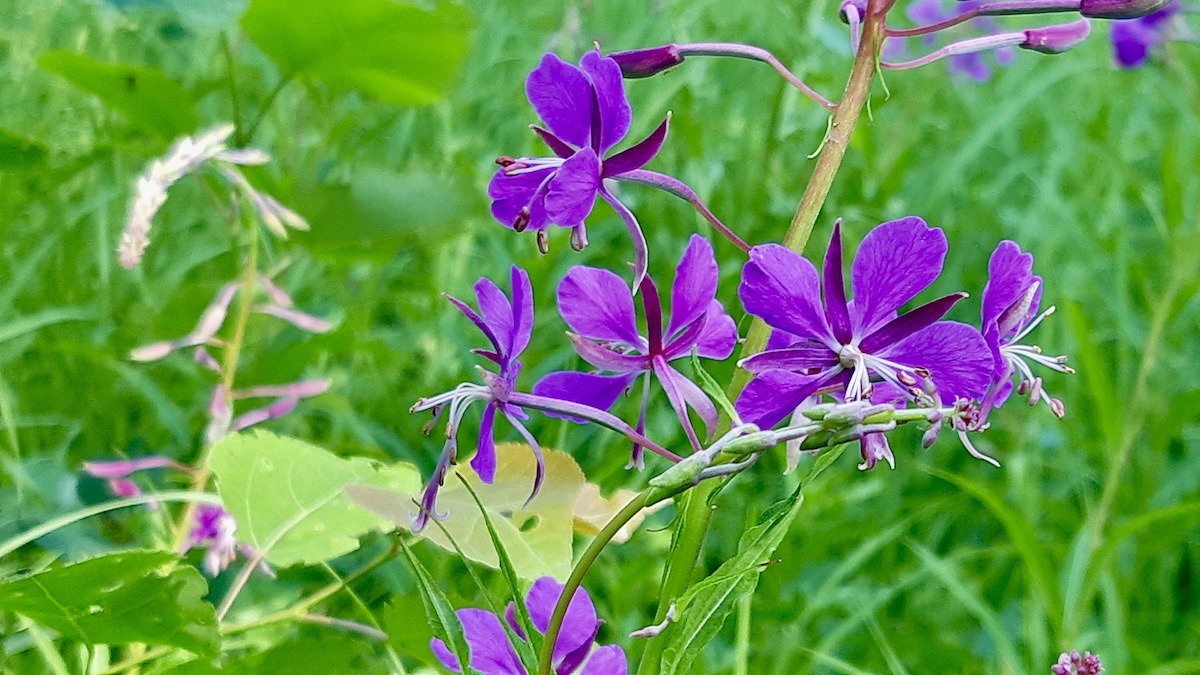
The vibrant purple blooms of Fireweed, a sure sign of midsummer. Photo: Jamie Bell
A Purple Spire of Renewal
For many who live with the rhythm of the northern forests, Fireweed (Chamerion angustifolium) is more than just a pretty face; it’s a symbol of rebirth. After a forest fire or any significant disturbance common in the Canadian Shield, these towering spires of magenta emerge, painting the scarred land with hopeful color.
Their cheerful blooms, arrayed along a tall stalk, create a striking contrast against the greens of Ontario’s summer. They really show how nature can heal and reclaim. This native Ontario plant is a true wildflower of the north, offering endless inspiration for photography enthusiasts and budding artists alike.
Beyond its striking visual impact, Fireweed holds practical value. Its young shoots, before the flowers emerge, can be gathered and cooked like asparagus, offering a taste of the wild. The vibrant flowers are a favored source of nectar for bees, leading to the production of a light, delicate Fireweed honey that is highly prized by local beekeepers. Even the seeds, with their fluffy plumes, have been used as a fiber for insulation or pillow stuffing by Indigenous peoples of Northwestern Ontario, showcasing fascinating traditional plant use that our summer art programs have been exploring through storytelling.
As the season progresses, the flowers give way to long, slender pods that release fluffy seeds, carried on the breeze like tiny, white parachutes. This helps ensure the next generation will rise where opportunity calls. This plant’s ability to colonize disturbed sites makes it a vital pioneer species, helping to stabilize soil and prepare the way for other plants to return.
Its cycle of growth, bloom, and dispersal is a powerful, ongoing narrative in the Northwestern Ontario wilderness, teaching us about nature’s patterns, a theme often captured in our art projects.





